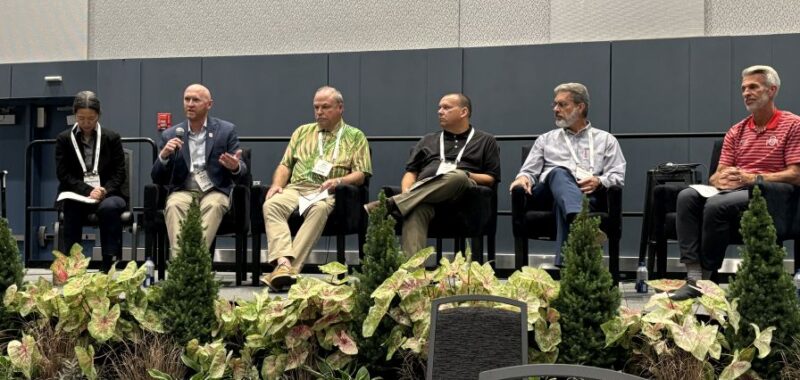 Greenhouse Grower’s July cover story featured a close look at enrollment in horticulture programs at universities across the country, why numbers are mostly on the rise since the COVID-19 pandemic, and how these institutions are preparing students to become future industry leaders. You can read the cover story here, and find in-depth podcasts with several university horticulture department heads here.
Greenhouse Grower’s July cover story featured a close look at enrollment in horticulture programs at universities across the country, why numbers are mostly on the rise since the COVID-19 pandemic, and how these institutions are preparing students to become future industry leaders. You can read the cover story here, and find in-depth podcasts with several university horticulture department heads here.
Cultivate’24 was a chance for some of these department heads to get together in person and offer additional insights. In a panel discussion moderated by Matt Foertmeyer of Foertmeyer & Sons Greenhouses in Ohio, the group delved into optimizing university strategies to prepare students for dynamic careers in horticulture, as well as collaborative opportunities between academia and industry.
One common long-term concern for the horticulture industry is a future high-level labor supply. While the universities can do their part, the challenge often lies with finding students in the first place.
“We are at historic enrollment highs, but many of our students are online students, which requires a different teaching method,” said Dr. Ryan Contreras, Professor and Associate Head of the Department of Horticulture at Oregon State University. “We are also a found major, which means students rarely attend Oregon State looking for a horticulture degree.”
Similarly, Dr. Neil Anderson, Professor and Interim Head of the Department of Horticultural Science at the University of Minnesota, noted that many horticulture students are transfers from non-horticulture majors or schools.
Developing Management and Leadership Skills
Once students are enrolled, the next step is to develop not just plant science knowledge, but management and communication soft skills.
“We require an internship and encourage group work,” said Dr. Doug Karcher, Professor and Chair of Horticulture and Crop Science at The Ohio State University. “This forces students to get out of their comfort zone.”
Dr. Justin Quetone Moss, Department Head and Professor at Oklahoma State University’s Department of Horticulture and Landscape Architecture, said the school offers a horticulture business degree that gives students different paths to take appropriate courses.
What about identifying those students who might become future industry leaders?
“Engaged students stand out, and you can usually tell that quickly,” Contreras said. “Once we identify them, we’ll use them to recruit more students.”
The Value of Internships
Internships are a critical part of the process of preparing students for a long-term career in horticulture.
“We ask the companies we work with to make the internship a rigorous and purposeful experience,” said Dr. Desmond Layne, Head and Professor of the Department of Horticulture at Auburn University. “We ask them to give interns a project, and hold them accountable for completing it.”
The internship can also serve as a trial run for a full-time job, and that’s how much the company and the student should view it, said Dr. Mengmeng Gu, Professor and Head of the Department of Horticulture & Landscape Architecture at Colorado State University.
From the standpoint of a grower that offers internships, Foertmeyer weighed in by noting that growers shouldn’t look at developing an internship program as a taxing or timely process.
“Think of it as a long-term investment in your company and the industry,” he said.

